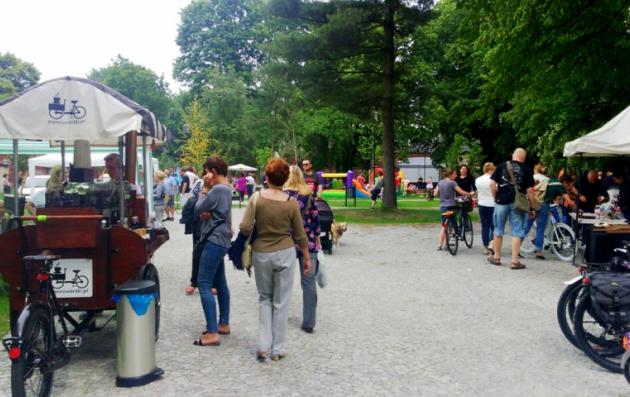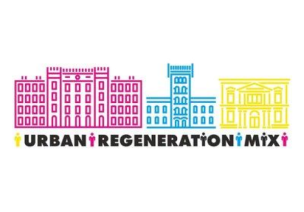Date of label : 02/06/2017
-
Lodz , Poland
-
Size of city : 671.000 inhabitants
Previously transferred

Summary
The original Good Practice of Łódź was the revitalization of the historic 6.5-hectare area of Priest’s Mill (Księży Młyn). This revitalisation included physical modernization and conservation of 25 city-owned multi-family buildings, all built in the 1870s and 1880s for factory workers and their families. Besides physical upgrading attention was given to economic activities, transforming some of dwellings into commercial premises, and social activities, establishing social economy, artistic and cultural entities.
In the second half of the 2010s the revitalization activities shifted towards the much larger rundown central area of the city, built in with old tenement houses. Lodz combined the practice of its pioneer project with the knowledge gained from the URBACT Transfer Network Urban Regeneration Mix (2019-2021). As a result, the role of mediators was further strengthened and extended with new tasks and responsibilities.
The solutions offered by the good practice
In order to organize the work and keep contact with the residents, the original model of mediator was a kind of „sheriff” function, regarding his competences (mediations, conflict and change management) the attitude towards people, and position in the complicated structure of Lodz city management. In the course of time this role and function have been further developed, towards a new system, establishing a team of mediators: Social Lighthouse Keepers and Area Hosts, who take care of about 700 families in the area of eight priority revitalization projects of the city center. Their core activities at the beginning were to help to solve the inhabitants' housing and everyday life problems. This approach, dealing predominantly with difficulties, was extended (on the inspiration of Braga and Birmingham) towards broader socio-cultural animation, as a tool for involving and activating residents, looking at the revitalisation area from a more wide perspective. A further step towards new competences of mediators was taken on the example of Toulouse and Birmingham, extending their tasks to work also with other stakeholders in the revitalisation area. On the one hand this meant to bring together all entities, including private investors, in a given area, allowing for an integrated management of the entire investment process. On the other hand, a community connector role was introduced, motivating and inspiring small groups of inhabitants to take bottom-up actions, building in them a sense of community and responsibility for the space and the neighbors with whom they share it.
Building on the sustainable and integrated approach
The most important element of the original practice was the presence of an official person responsible for revitalisation and the fact that the residents could always report problems and failures. On that basis the residents have started to react to acts of vandalism and violence. Besides the residents also other actors became better partners of the renewal process, e.g. administrators of infrastructure networks, artists, Police and Municipal Police. With the further development of the project, introducing the extended roles of the team of mediators, it became even easier to constantly adjusting to the residents’ requirements and opinions. Mediators now have also "managerial" skills, not only supporting the local community, but related also to the involvement of employees in other activities carried out in the area, such as: cross-financing, cooperation with entrepreneurs, communities, participation in local initiatives, creating a network of understanding between institutions, cooperation in projects implemented in the neighbourhood.
Based on a participatory approach
In this project, various forms of social consultations have been worked out. MEDIATOR: supporting the inhabitants in the process of change and relocation, focusing on problem solving. LOCAL COMMUNITY ORGANISER who integrates, activates and works with the residents and institutions in the area to create an integrated neighbourhood. AREA MANAGER a representative of the residents and institutions from the territory under his care in the municipality, who monitors and actively participates in all meetings and activities affecting the people living and working in the area, as well as the organisations and enterprises operating there.
What difference has it made?
The historic housing estate built for factory workers in the 19th century had been neglected for decades. Now the buildings regain their residential function with 21st century standards, but they preserve their former functions as well and the public space layout designed 140 years ago is preserved, too. At the same time, dwellings in these buildings, most of which are city-owned and include communal flats, serve to meet one of the most basic social needs, which is to ensure shelter for people who cannot afford to rent an apartment on the open market. All activities are conducted in a way that makes it possible to preserve the original urban fabric of the site. The fact of great importance is that thanks to direct relations with people, help is given in the first place to those who need it most. This kind of approach helps to increase social trust in the authorities, in the city. The residents feel they really can influence the actions, and that the city strives to help them and understands their needs and problems. Also, activities aimed at including people in cultural life are conducted. Together, artists and the city organize events in which the residents participate. The project is a perfect example of how activities contributing to social inclusion should be performed. Some people have gotten jobs at companies renovating the area. Similar processes are under way in the ongoing city centre urban regeneration programme. At the end of the Urbact network, the city of Łódź will be able to present a comprehensive model of competence and activities of the Area Manager, i.e. a mediator working at an advanced stage of creating a social mix. The commissioning of the tenement houses after renovation in the city centre area started at the end of 2019, and time is needed to gain experiences to what extent it succeeded to create social mix in the renewed area. The development of the good practice and the improvement of the mediator's function will in the future influence the Housing Policy in Łódź also besides urban renewal, extending to the scope of spare flats, removals and contact with resident. Mediator is a unique function that is also part of the strategic project of Intelligent Social Policy - an integrated information system. Effective implementation of mediation may contribute to the introduction of strategic changes in the understanding of the contact between the Office and the resident.
Transferring the practice
After being awarded the URBACT Good Practice title, Lodz was able to create the Urban regeneration Mix Transfer Network to which six European cities (Baena, Birmingham, Bologna, Braga, Toulouse and Zagreb) were invited which were similarly facing the challenge of raising the level of participation in revitalised areas. Equipped by URBACT with a toolkit, the cities could learn from each other. The transfer process was not one-sided, during the transnational meetings the existing practices of some of the transfer cities inspired Lodz and contributed to the improvement of the Good Practice in the way described above. The area, which used to be considered not so safe and ill-famed, has become one of the most interesting spaces in the city for its atmosphere and unique historical characteristics.
-
359_Lodz_GPsummary.pdf(PDF, 40Ko)

